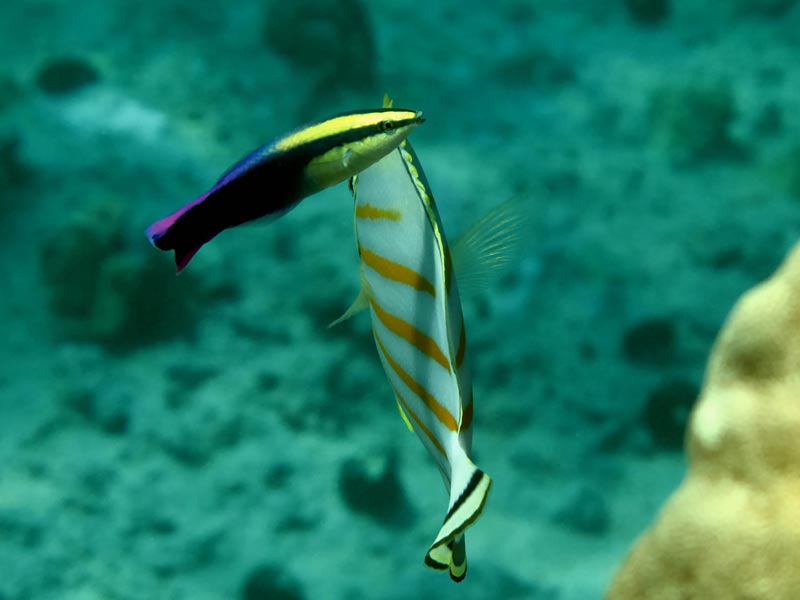Hawaiian Cleaner Wrasse
Labroides phthirophagus
Wrasses are one of the most common and captivating reef fishes, and the Hawaiian Islands has over 40 species of them. They are characterized by bright color patterns which vary significantly with age and sex. Most wrasses are elongated and cigar-shaped with one continuous dorsal fin. They have thick lips and sharp teeth that often protrude slightly forward and can be easily seen. These carnivorous fish usually prey on small invertebrates. Most Hawaiian wrasses are small to mid-size, and that largest growing up to about 20 inches. During the day, the flee predators using their speed and agility. At night they hide in holes and cracks, or bury themselves in the sand. Several species spend the night in tidepools.
The family name comes from the Greek name labros, which means "greedy." The word "wrasse" comes from either the celtic urach or the Cornish gwragh. Hawaiʻi has 43 species of wrasses, and 13 of them are endemic. Although not all wrasses have Hawaiian names, a general name is hīnālea. In old Hawaiʻi a pungent condiment was made using partially decomposed wrasses, crushed kukui nuts, and chili pepper. Someone with bad breath was sometimes referred to as a "dish of hīnālea sauce."
These adult Hawaiian Cleaner Wrasse are yellow and magenta with a black stripe from head to tail. The juveniles are black with a bright blue line along its back. These wrasse spend their time picking parasites and dead tissue from the bodies of larger fish. Similar to parrotfish, they encase themselves in thick mucus at night. Cleaner wrasses occupy a particular area, such as a coral head. By dancing and swimming up and down, they attract attention and any fish stopping by the cleaning station will get serviced by them. For many fishes this may be a necessary service, and they wrasse can enter the mouths of large fishes with impunity. The removal of this fish is detrimental to the health of the reef and other fish. The species name means "louse eater." They grow up to 4 inches, and are endemic to Hawaiʻi.
